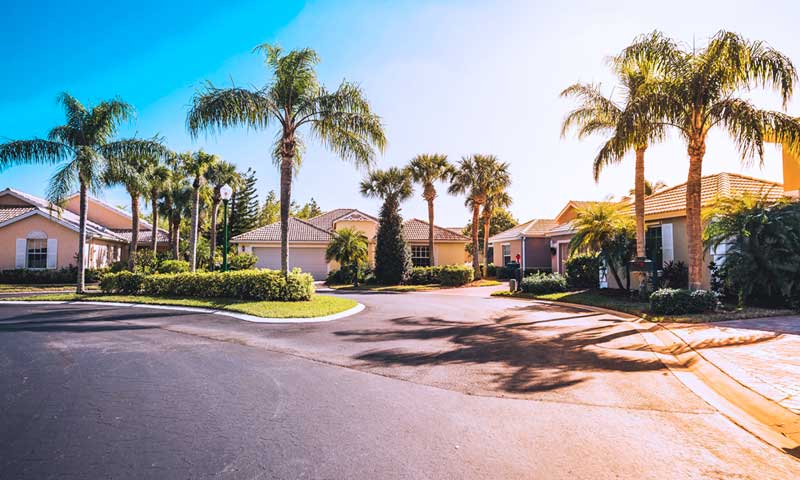BLOG
This article is the second of a two-part series of articles on insurance issues for condominium associations by our friend Daniel B. Odess, the president of Globalpro Recovery, Inc. (www.getglobalpro.com).
Hurricane, Windstorm, Thunderstorm, Wind, or Rain; One of these is not like the other. Do you know the difference?
Do you remember the jingle for the candy bars Almond Joy and Mounds? “Sometimes you feel like a nut . . . sometimes you don’t” . . .
Sometimes your policy defines words in the definitions section of your policy . . . sometimes it doesn’t. Some terms aren’t even in your policy, but these events cause significant damage to your building. Quite often these types of claims are either unreported or improperly reported as something else. It doesn’t help that sometimes we find that a policy has a deductible for “wind” on the first page, but has an endorsement for “Windstorm.”
Do you see the difference?
I do, but I’m well-versed in the language and I’m supposed to know the difference. If you think about it logically, on any given day in South Florida we have wind, but we most certainly do not have windstorms. So, logically it would not make sense for the insurance company to apply my wind deductible to a windstorm claim, especially if it’s not specifically defined in the policy as being one in the same. This is just one of the many issues with most insurance policies placed on commercial policies and why it’s very important to take the time to understand how you’re to get paid rather than how you pay your insurance company.
With the recent bad weather that continues to bring heavy rain, wind, and thunderstorms, many businesses and condominium associations are making claims for roof failures that have caused substantial damage to the interior of their buildings. Unfortunately, many of these claims will be wrongfully denied simply because they are being misrepresented and/or misreported. Here is the rule of thumb when it comes to interior damage caused by a failed roof:
- The loss is not covered unless there is a clear opening created in the roof caused by a covered peril.
- Peril is generally defined as a specific cause of loss covered by your insurance policy, such as fire, windstorm, flood, or theft.
But, why so technical, you ask? You’re not obligated to prove that your loss is covered by your insurance policy. If you’re not an expert or have substantial experience in engineering, construction, meteorology, and/or insurance, the best advice is to stick to the damages.
- Is the drywall wet in your building? If yes, then tell the insurance company that the drywall is wet.
- Is the carpet destroyed by the water? If it is, then say just that – carpet destroyed by water.
- Why did the roof fail? If you’re not a roofer, an engineer, and/or a contractor, then you simply don’t know.
Stick to the KISS theory (Keep It Short Simple) and report the facts and what you know for sure. Your opinion is just that, it’s an opinion and not a matter of fact. Your insurance company is going to stick to the policy verbatim, so if you have never opened it, read it, or understood it, you’re putting yourself and/or the association in a bad position. Provide the facts and rely on your experts.
Mitigate. Stop. Recover. Rebuild.
Your policy of insurance is your guideline to recovery. Being familiar with your policy will save you and your association a lot of time and money. You are never obligated by your insurance policy to rebuild before you recover. In fact, the policy is laid out so that you recover before you rebuild. Remember, the policy requires that in order to recover you must mitigate your damages. Translation — stop your damages from getting worse, i.e., cap the broken pipe or put a tarp on the roof to stop the water from causing any further damage. That’s it. Ironically, if you mitigate and rebuild too fast, your insurance company can deny your claim, even though you did what you believed to be the most logical thing to do. Why wait? Because your policy requires you to wait, so that the insurance company can adequately document and adjust your loss fairly and timely. If you’re short on funds, or don’t have the time, you might cut corners or restore your property with lessor quality materials. Both will substantially lower your recovery because you’re entitled to what you had before the loss occurred. Even with that said, sometimes Associations are encouraged by their insurance companies to produce receipts, proposals, and invoices from contractors prior to a coverage decision being made or before the association has received a dime from the insurance company. In order to recover everything you’re entitled to under your policy of insurance, mitigate and then stop.
Don’t rebuild just yet.
Don’t obtain proposals from contractors to do the repairs.
You have no idea how much the insurance company is going to pay you for your damages. Why get yourself in a financial bind by not knowing how much money you have in order to rebuild? Why get estimates for materials and labor, if you don’t know if it is covered? Don’t waste your time! The insurance company has an obligation to fairly and timely adjust your loss by providing you a coverage decision and by estimating the full value of your damages. Delays in their obligation to you can spell financial disaster for your association. By hiring a public adjuster or a knowledgeable consultant to handle this process on your behalf, it will expedite the process and put pressure on the insurance company to make the appropriate decisions and payments before you over extend your association financially or box yourself into inadequate repairs.

